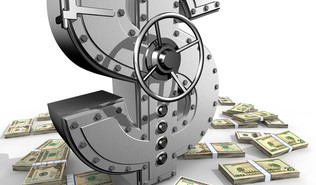Good morning. The US dollar remains strong this morning after yesterday’s FOMC policy meeting. Chairman Yellen and company released a carefully worded statement that is resonating with dollar bulls for some minor tweaks made towards labor and inflation outlooks. In the minutes following the 2pm release, volatility was extreme as the greenback was sold hard, but as the market digested the statement, its more hawkish tone won the day, pushing the dollar to its best levels in one week. The more hawkish tone really puts today’s Q2 GDP release under the spotlight, as these economic results seem to be what is shaping the Fed’s decision points. Meanwhile in Europe, stronger than expected economic and business confidence measures were not enough to buoy the euro as the single currency continues to trade heavy this morning, below key psychological levels.
European bourses are another sea of green today following a number of positive economic releases overnight. While yesterday’s Fed statement continues to pace markets, some relative optimism has settled over mainland Europe with everything from German employment to Swedish GDP besting the market’s estimates on Thursday. Unfortunately, the euro cannot reflect this optimism as it remains a sell on rallies versus the US dollar. Tomorrow, Eurozone inflation and unemployment figures finish off this week’s data releases, coinciding with German retail sales, which should garner some attention. The Shanghai Composite was down another 2% today, weighing on Asia-Pac currencies. The Australian dollar lost a bit more ground as second quarter export prices fell 4.4%, more than expected.
Back to the Fed, despite a fairly neutral statement, the US dollar experienced a lot of buying pressure in the hours following the 2pm statement. As expected, the Fed kept rate unchanged at 0.25% and declared that risks to the broader economy and jobs market were “neatly balancedâ€. Chairman Yellen and company added that rates could rise after “some further†improvement in the labor market and added they were reasonably confident inflation would return to its 2% target in the medium term. These two slight changes to the statement have so far lifted the greenback, nudging up expectations for a September hike. Having said that, the market remains split on a September rate hike with roughly 45% of Wall Street analysts now forecasting a jump to 0.50% for the headline rate. Yesterday’s decision to maintain the rate at 0.25% was unanimous, which was a slight surprise, but had no impact on price action following the statement’s release.
It is Thursday which means it is jobless claims day for the US. This week, markets are anticipating 281k Americans filing first time unemployment claims for the week ending July 24th. Last week it was reported that only 251k Americans filed claims, the lowest level in over twenty years. Next week, the July non-farm payrolls report is released. As previously indicated, we also get our first look at Q2 GDP this morning and the market is anticipating a +2.4% annualized increase. This is a key number after the dismal first quarter which produced a minor contraction in growth, -0.2%. There is nothing on the docket for Canada but USDCAD continued to edge higher post-Fed. The USDCAD rate did touch its lowest rate since July 15th in the immediate aftermath but the move was short-lived as traders jumped on the more upbeat statements from Yellen and sold the CAD and other commodity currencies. Some technical resistance could materialize slightly above current market levels but for now, nothing has changed for the Loonie as it remains a sell on rallies.
Further reading:
EUR/USD, USD/JPY, GBP/USD Pivot Points, TA – July 30 2015
USDCAD



